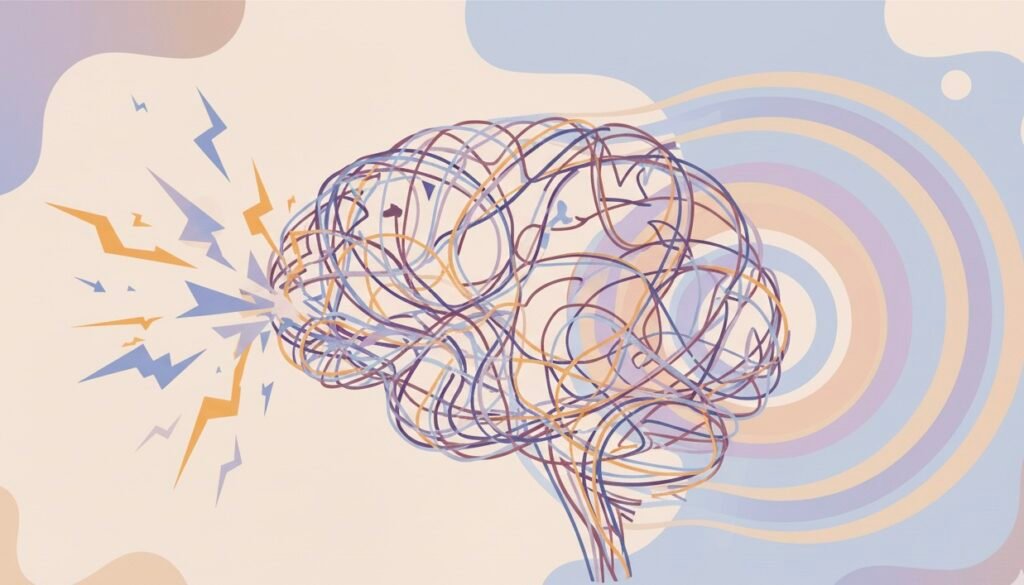For decades, people treated chronic pain as something fixed – something to manage, not change. Over the past twenty years, neuroscience has shown that the brain’s wiring isn’t static. Circuits that amplify pain can quiet down through specific training, much like other neural habits fade with repetition.
The concept of retraining the brain began in cognitive-behavioral pain programs in the 1970s and evolved through imaging research in the 1990s and 2000s, which proved that long-term pain reorganizes sensory and emotional networks. The phrase brain retraining became common in the 2010s within pain-reprocessing and limbic-system approaches.
Today, it’s supported by a growing body of research. Clinical trials of neuroplastic treatments such as Pain Reprocessing Therapy report that around 60-70 percent of participants achieve substantial improvement or full relief when they practice consistently. In science, it’s considered a research-supported complement to medical treatment, not a replacement. The goal isn’t to “think away” pain but to help the nervous system interpret signals accurately and lower unnecessary protective responses.
Want to turn down the volume on pain? Discover the four key steps inside to teach your brain that you’re safe.

What Is Brain Retraining for Chronic Pain?
Brain retraining is a group of structured practices that teach the body to stop overreacting to harmless signals. It relies on repetition and gentle learning rather than force or positive thinking. The major elements are somatic tracking, reframing, safety learning and emotional awareness.
If you want to understand the physiology behind it, see Why Your Nervous System Amplifies Pain: Central Sensitization Explained.

Core Techniques to Retrain the Brain for Chronic Pain
Brain retraining isn’t about mastering dozens of exercises. It’s about practicing a few that teach your brain and body to stop reacting to normal signals as if they’re danger. These four make the biggest difference.
1. Somatic Tracking
Somatic tracking means observing sensations with curiosity instead of alarm. You notice what’s there – tightness, warmth, tingling – and describe it neutrally, without trying to make it stop. That calm observation teaches the brain that the body isn’t under threat. With repetition, this reduces overreaction and helps restore calm processing.
2. Reframing (Cognitive Reappraisal)
Reframing changes how you interpret what you feel. When a sensation appears, instead of thinking “something’s wrong,” you remind yourself that your system is being overly cautious. This mental shift quiets the brain’s danger circuits and builds confidence in your body’s resilience. Read the full guide here → Reframing Chronic Pain.
3. Safety Learning (Positive Reinforcement)
After long periods of pain, the brain expects harm even in normal situations. Safety learning reverses that. You gently reintroduce everyday movements or tasks and take note when nothing bad happens. Each success adds additional evidence that the body is safe. Over time, these experiences outweigh the old danger associations and help pain responses settle.
4. Emotional Awareness & Regulation
Many people with chronic pain suppress emotions – anger, grief, fear – without realizing it. That tension keeps the nervous system reactive. Practicing emotional awareness means noticing what you feel and letting it move through without judgment. Self-compassion is part of this: treating yourself kindly while the system relearns calm.

Other Helpful Tools for Brain Retraining
These practices support the four core ones. Explore them gradually; you don’t need to do everything at once.
- Breathing & Grounding: steady the nervous system before or after somatic tracking.
- Pain Neuroscience Education: understanding how pain works reduces confusion and fear.
- Graded Exposure: rebuild movement confidence step-by-step once fear decreases.
- Attention Shifting: practice redirecting focus from pain to neutral or pleasant cues.
- Acceptance & Self-Compassion: reduce frustration and maintain consistency.
- Daily Supports: regular sleep, light activity and social connection help the system stay balanced.
For background on pacing during bad days, see Flare-Ups vs Daily Pain: A 24-Hour Plan.
For context on stress responses, read Nervous System Dysregulation and the Fear–Pain Cycle.
How to Start Retraining Your Brain for Pain
Start safely, with education and short sessions. Keep them gentle – ten minutes, not an hour – is enough to reshape responses.
A short, simple structure works best:
- Notice sensations without judgment.
- Take a few steady breaths or ground yourself.
- Reframe the meaning (“my system is alert, not damaged”).
- Do one normal movement or task you’ve been avoiding.
- Recognize that nothing bad happened
Remember: if symptoms spike dramatically or mood drops severely, pause your practice and reach out to your clinical support team. This is a safety check to ensure you’re on the right track and to help you readjust your approach so that the process reduces fear, rather than adding to it.
Common Misunderstandings About Brain Retraining
- Retraining isn’t denial or “positive thinking.”
- It doesn’t ignore medical conditions; it complements their care.
- You’re not trying to block sensations – you’re teaching the brain to interpret them correctly.

What the Research Shows
Studies on neuroplasticity and behavioral therapy confirm that pain is not only a signal from tissues but a perception shaped by the brain’s predictions and context. When people repeatedly practice calm observation, reinterpret sensations and collect new “safe” experiences, pain-related brain regions become less active. Improvements build gradually over weeks, consistent with any learning process.
Research supports this approach: a 2021 randomized clinical trial in JAMA Psychiatry found that about two-thirds of participants practicing Pain Reprocessing Therapy became pain-free or nearly pain-free after treatment (Ashar et al., 2021) https://jamanetwork.com/journals/jamapsychiatry/fullarticle/2784694

FAQs
Brain retraining effects are measurable, not imagined. Neuroimaging studies show that consistent practice reduces activity in pain-processing regions of the brain. It works through learning, not suggestion. Placebo responses fade when practice stops; retraining results strengthen with repetition – the opposite pattern.
Progress varies. Some people notice a lighter or calmer response within weeks; others need months of practice before major change. Like any new skill, improvement comes from repetition. Each practice reinforces safety and weakens fear, so people do not waste their time.
Results depend on consistency, sleep, emotional load and how long pain has persisted. The process rewards repetition, not intensity. Small daily efforts matter more than occasional long sessions.
Pain Reprocessing Therapy (PRT) is the specific methodology with the strongest scientific evidence that applies the principles of brain retraining. It is considered the “gold standard” of these techniques. Brain retraining is the broad concept (using neuroplasticity), while PRT is a structured, specific application of that concept, focused on educating the brain and practicing somatic tracking to reduce the perceived threat.
Absolutely not. If your brain generates a pain signal, that signal is 100% real. Brain retraining acknowledges that in chronic pain without active injury, the brain’s alarm system has become hypersensitive because of neuroplasticity, generating pain as an unnecessary warning. The goal isn’t to deny the pain, but to teach the brain to adjust the volume of that alarm. You can find more details about the diagnosis and what normal medical tests mean here: How Chronic Pain is Diagnosed.
Yes, it does. Neuroplasticity (your brain’s ability to change) continues throughout life. Long-standing chronic pain simply means that the alarm circuits reinforced themselves for a longer period. Studies have shown that patients with pain lasting ten years or more have achieved remission. The key isn’t the duration of the pain, but the consistent, relentless, daily practice of the retraining techniques.
1. Focusing on Elimination (Not Safety): obsessing over “getting rid of the pain” generates more fear. The goal must be to establish safety and calm in the nervous system.
2. “All-or-Nothing” Practice: stopping practice when pain flares up. Retraining requires you to be consistent and apply the techniques, especially during high-pain moments.
3. Lack of Emotional Validation: ignoring the frustration or anxiety associated with pain. Negative emotions amplify danger signals; successful retraining includes learning to acknowledge and process these emotions. To learn how to identify and manage the anxiety that drives the pain cycle, read our full guide.
The Takeaway
Persistent pain doesn’t automatically mean permanent pain. When the brain learns that the body is safe, pain can fade. The path is gradual: observe, reframe, collect safe experiences and allow emotion. Those small moments of calm retrain the system over time. Stay curious and be kind to yourself!
If you got this far,
Get Support in Your Inbox
Subscribe to the newsletter and let me help you turn confusion into clarity. The PDF I have prepared is a guide that will help you organise all the elements of your condition: symptoms, treatments and impact, so you can understand your pain behaviour. This is truly important when it comes to explaining it to healthcare professionals, loved ones and yourself.
“Clinical Clarity Workbook – A map for precise diagnosis“
Until next time,
Alina

